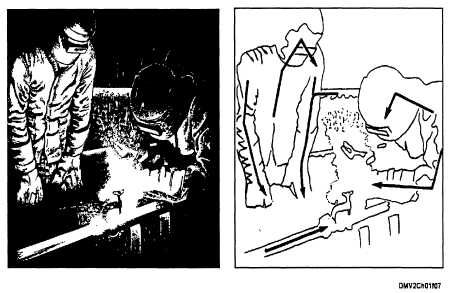Compositional Elements, Continued
Line movement
The term “line movement” refers to the direction that the viewer’s eyes move
within the picture area, called directional lines, and lines that suggest
attitudes or emotion, emotive lines.
DIRECTIONAL LINES: Directional lines should always lead the viewer to
see what you want him to see.
Directional lines are created by arranging
objects so that the outlines of the main objects lead to the intended action or
center of interest. Directional lines may move smoothly and rhythmetically
from one object to another, grouping and relating objects that belong
together. The movement could also be abrupt, creating lines that clash. This
latter method is appropriate when drawing scenes of violence, conflict, or
stress. Review your thumbnail sketches. Evaluate which of the sketches
have directional lines that successfully lead the viewer into the picture area.
Do not allow linear backgrounds or foregrounds to compete or interfere with
the center of interest. Avoid crowding lines or having lines spaced at equal
intervals.
Figure 1-7 shows directional lines.
Figure 1-7.—Directional lines.
Continued on next page
1-9

